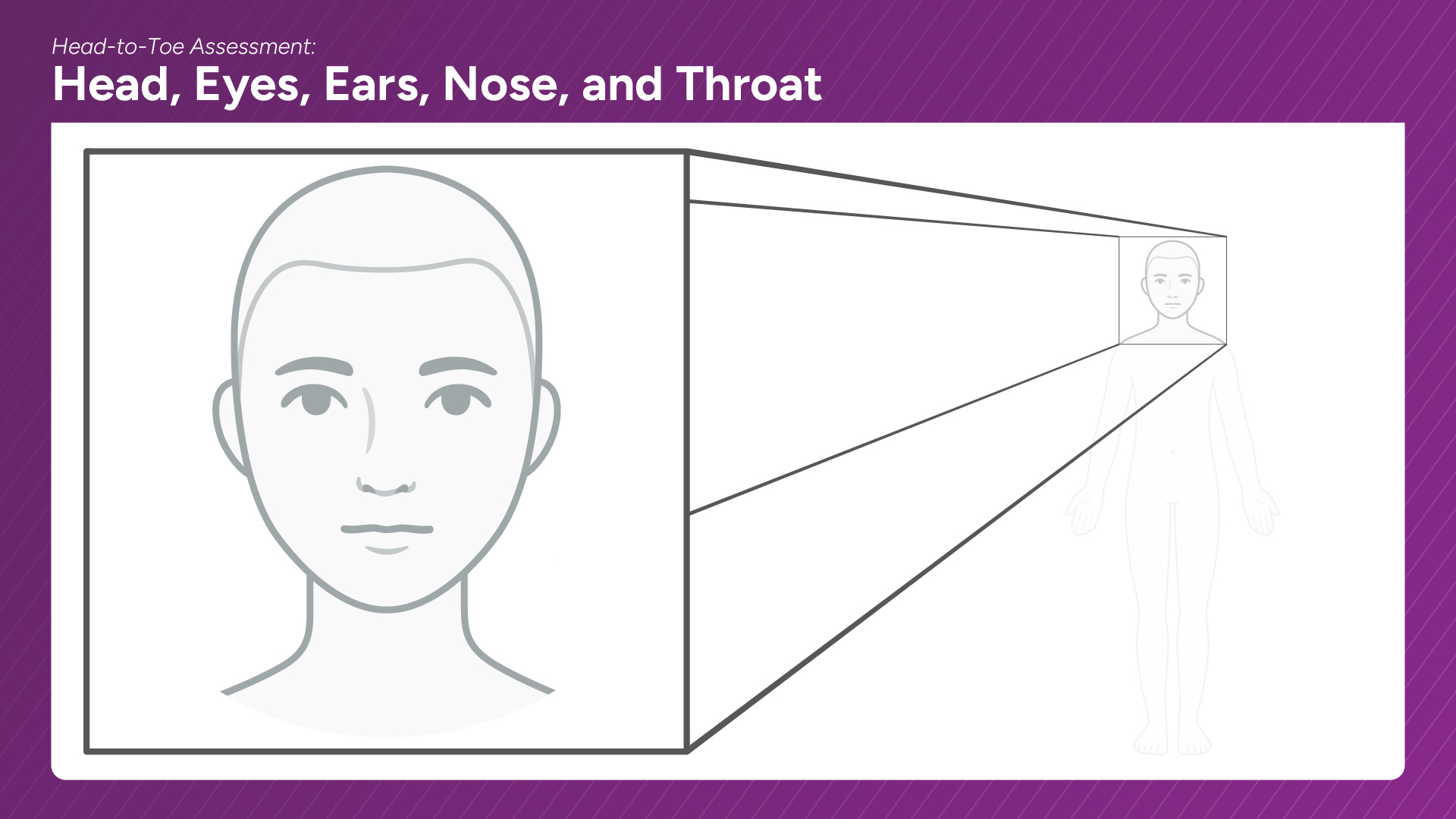
-
509,397
Head
-
622,578
Eyes
Anatomy:- External structures: eyelids, eyelashes, lacrimal apparatus
- Ocular components: sclera, conjunctiva, cornea, iris, pupil, lens, retina
- Cranial nerves: Optic nerve (Cranial Nerve II), Oculomotor (III), Trochlear (IV), Abducens (VI)
- Receives and processes visual input
- Pupils adjust for light and near/far vision
- Allows movement of the eyeball and coordinated gaze
- Watch: Pupil Light Reflex
-
774,554
Ears
Anatomy:- External ear: auricle (pinna), external auditory canal
- Middle ear: tympanic membrane (eardrum), ossicles (malleus, incus, stapes)
- Inner ear: cochlea, semicircular canals
- Cranial nerve: Vestibulocochlear nerve (Cranial Nerve VIII)
- Detects sound waves and transmits them to the brain
- Maintains balance and spatial orientation
-
435,638
Nose
Anatomy:- External/internal structures: nares (nostrils), nasal septum, turbinates
- Sinuses: frontal, maxillary, ethmoid, sphenoid
- Cranial nerve: Olfactory nerve (Cranial Nerve I)
- Filters, warms, and humidifies inhaled air
- Detects odors and contributes to the sense of smell
- Assists in vocal resonance and sinus drainage
-
509,857
Throat (Oropharynx and Neck)
Anatomy:- Oral cavity: lips, tongue, uvula, soft palate, tonsils
- Pharyngeal structures: oropharynx, laryngopharynx, larynx
- Neck: trachea, thyroid gland, cervical lymph nodes
- Cranial nerves: Glossopharyngeal (IX), Vagus (X), Hypoglossal (XII)
- Facilitates swallowing and speech
- Supports immune defense via tonsillar tissue
- Regulates metabolism through thyroid hormone production
- Cranial bones: frontal, parietal, temporal, and occipital bones
- Soft tissues: scalp, skin, subcutaneous tissue
- Facial structure: facial bones (zygomatic, maxilla, mandible), facial muscles
Physiology: